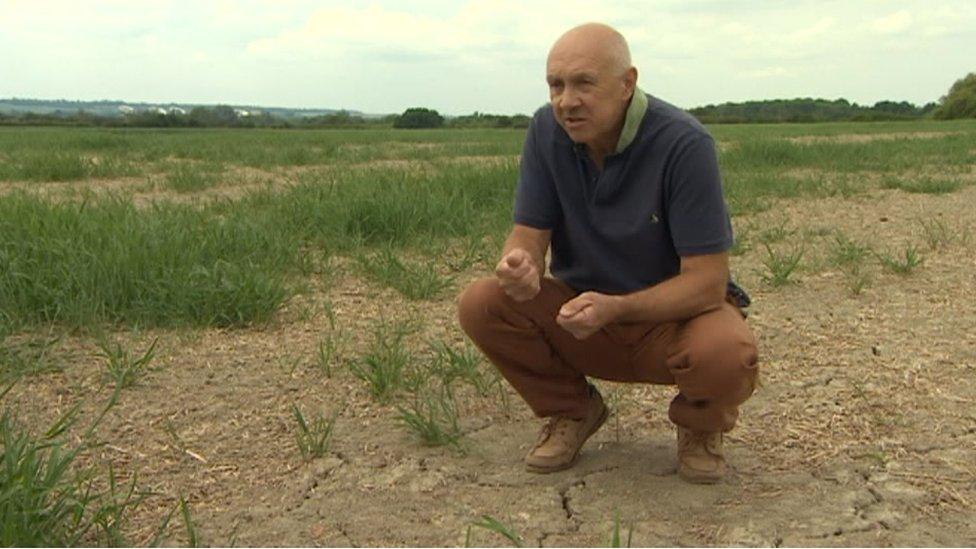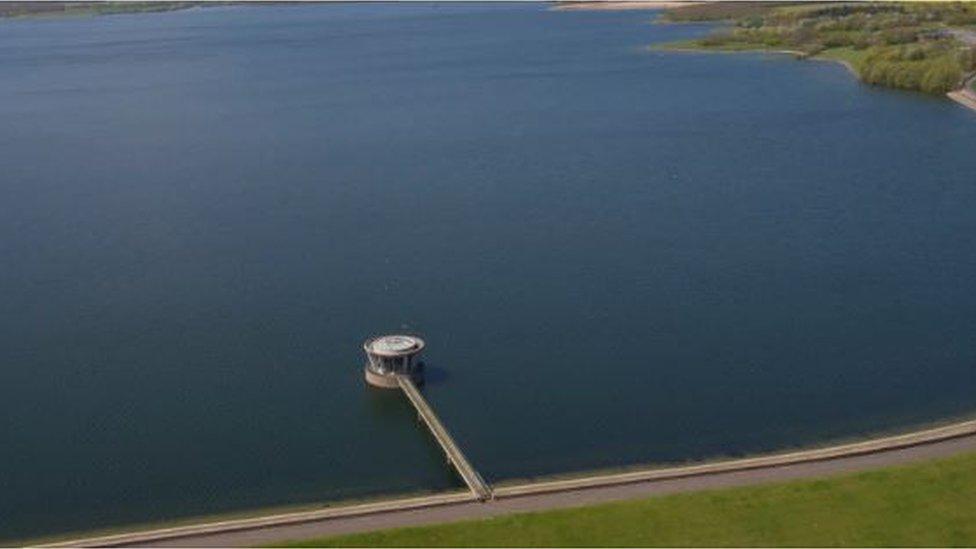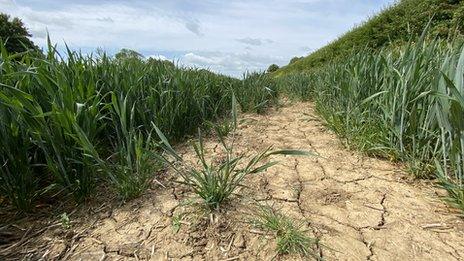Water shortages: Demand in East up 20% during dry May
- Published

Farmer Tim Scott has bare patches in some of his wheat fields
Demand for water across the East of England was 20% above normal levels during May, Anglian Water has revealed.
Hand-washing to prevent Covid-19's spread may have further boosted demand during a dry, sunny month, it said.
May's drought compounded problems for farmers, already suffering after a wet February delayed seed germination, making some crops unviable.
Anglian Water said: "An additional 200m litres of water was pumped to homes in May... roughly 20% more than normal."
Director Paul Vallely said: "We have seen an increase in the demand for water as people wash their hands more, stay hydrated and use more for DIY in their homes and gardens."
Northamptonshire was the driest county in England in May, external with 1.7mm (0.06 in) of rain. Cambridgeshire had 2.4mm (0.9 in), Suffolk 3mm (0.12 in) and Hertfordshire 3.4mm (0.13 in).

Anglian Water said there was pleny of water in the region, despite increased demand
Cambridgeshire wheat farmer Tim Scott said he was concerned over food prices.
"As a country we produce about 17 million tonnes of wheat. We consume 13 to 14 million tonnes, whether that's ground to make bread, breakfast cereals, or fed to animals.
"I've heard predictions we'll only produce seven or eight million tonnes... and the knock-on effect will be... food prices will be up."

Volunteers work on vines, which are growing in clay soil that is drying out, leaving deep cracks
Jane Markham, of Warden Abbey Vineyard in Bedfordshire, has called in volunteers to help water the vines.
"We've never seen in 10 years that it's been this dry", she said.
Essex farmer Christy Willett has written off a large crop of linseed as "unviable".

BBC reporter Maria Veronese with farmer Christy Willett in a field where a crop of linseed became unviable
"Many seeds just did not germinate here and it's not a viable crop," she said.
"In May we recorded no rain at all, nothing measurable, and that's rare."
In Suffolk, the River Deben, normally in full flow at this time of the year, was dry in places.

The River Deben in Suffolk is usually in full flow in May
- Published2 June 2020

- Published1 June 2020

- Attribution
- Published1 June 2020
